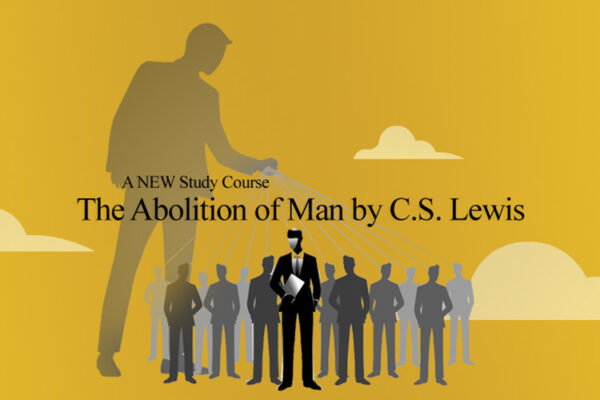Back to series


Dorothy Sayers (1893-1957)
Dorothy Leigh Sayers was born at Oxford on June 13, 1893, and died December 17 (or 18), 1957, at Witham, Essex. Her father, Rev. Henry Sayers, was an Anglican priest and, at the time of Dorothy’s birth, headmaster of Christ Church Cathedral School. In 1898 her father moved to Bluntisham to serve as a rural parish priest. Dorothy was an only child and delighted to be often the center of attention. Her father jokingly called her “little humbug,” and later she describes herself as a little “prig” playing one adult against another.
In recounting her own early education in The Lost Tools of Learning, she describes her development in three stages—Poll Parrot, Pert, and Poetic. From nine to eleven she liked to memorize lists and other amusing things (Poll Parrot). From twelve to fourteen she specialized in contradicting her elders (Pert). From fifteen on she was a rather moody but articulate adolescent (Poetic). In her early years, Dorothy was educated at home by her mother. When she was almost seven, her father decided to teach her Latin. She was pleased with the special attention from her father and with the opportunity to learn a language that her mother and nurse did not know. Quick to pick up her daily Latin lessons, she moved on to learn French and German.
C.S. Lewis described his home as having books everywhere, in the study, in the halls, and in the attic. Dorothy Sayers’ home was similar, and she read everything she could find—children’s books, classics, and novels. She especially loved The Scarlet Pimpernel and her favorite, The Three Musketeers. Whatever she read, she remembered, and she was fond of incorporating the stories and their characters into her play and games.
In 1905 her father hired a French governess to teach her French. She was expected to speak French almost all day. During these years, she demonstrated an outstanding aptitude for languages. With hopes of preparing Dorothy for further education at Oxford, her parents sent her away to boarding school at sixteen. Goldophin School was not an easy adjustment. Dorothy had gone from being the center of attention to being one of many girls. It was not the happiest period of her life. However, she did excel in her studies. In 1910, after taking national examinations, she did better than any candidate in England who took both the French and German exams. Finally, she went to Oxford to take the entrance exams offered there and won the Gilchrist Scholarship to Somerville College—one of the highest scholarships in England. In the exam, she demonstrated her passion for translating poetry from one language into poetry in another language. She took a French sonnet and translated it into strict Petrarchean poetic form.
Dorothy loved life at the university, especially discussing ideas late into the night at one of Oxford’s many pubs. She would talk about many subjects but particularly, through reading the works of G.K. Chesterton, became a defender of orthodoxy. She later wrote:
To the young people of my generation, G.K.C. was a … Christian liberator. Like a beneficent bomb, he
blew out of the Church the quality of stained glass of a very poor period and let in gusts of fresh air in
which the dead leaves of doctrine danced. … It was stimulating to be told that Christianity was not a dull
thing, but a gay thing … an adventurous thing … not an unintelligent thing, but a wise thing … Above all,
it was refreshing to see Christian polemic conducted with offensive rather than defensive weapons.
Dorothy had a good musical voice and joined Oxford’s Bach Choir. She also participated in plays that she and her friends wrote and produced. The friendships she made during these years lasted throughout her lifetime. In 1912 Dorothy and her friends started a literary club called the Mutual Admiration Society (or M.A.S.). Much like Lewis and Tolkien’s Inklings, they met once a week in a member’s room to read things they had written for fun and for criticism. At the end of her time at Oxford, she excelled in her written and oral exams, taking First Class Honors in Modern Languages.
There were not many positions available for women at Oxford during this period. Having decided that she was going to be a writer, Dorothy worked at one point for Basil Blackwell at Oxford, publishing a book of poems called Op I and another called Catholic Tales and Christian Songs. She also read all kinds of detective stories. Once she commented that she was going to make detective stories fashionable reading for intelligent people and make money as well. She proceeded to work on Whose Body, involving the character Lord Peter Whimsey, who is a regular throughout her novels.
While employed by the advertising agency S.H. Bensons, Dorothy continued to work at her detective fiction. She remained at Bensons for nine years until she was able to write full time. She is said to have invented the slogan, “It pays to advertise,” and helped develop a very successful ad campaign for Colemans Mustard. While in London, she met another writer, John Cournos, who became the great love of her life. Unfortunately, her affections were not reciprocated. Although he insisted to her that he did not want to get married and have children, when he left to go to America, he soon married another woman with children. Dorothy was miserable and bitter as her letters from this period clearly show.
Perhaps it was this emotionally devastating relationship that set her up for personal crisis. She had an affair with a young car salesman (name unknown) that left her unexpectedly pregnant. At that time, society made it hard (culturally and legally) for unwed mothers. Dorothy especially wanted to keep this pregnancy from her parents. The baby’s father would do nothing to help her, so she asked her cousin, Ivy Shrimpton, who cared for foster children, to keep the baby. She agreed. Dorothy took a leave from Bensons supposedly to finish her second novel, Clouds of Witnesses, and had the baby. Amazingly, she managed to keep her pregnancy a secret. This fact was not revealed publicly until after she died and left almost all of her estate to her son, John Anthony Fleming. John Anthony was born in 1924, and in 1926, she married Oswald Arthur Fleming. Later, Dorothy and Oswald adopted John Anthony and paid his way through boarding school and Oxford University. The adoption was publicly known but not the fact that John Anthony was Dorothy’s biological son. Dorothy lived all her life knowing that this “skeleton in the closet” could be revealed in a very public manner. It is conjectured that guilt over her past made it impossible for her to accept Archbishop Temple’s offer of an honorary Doctor of Divinity degree later in her life.
Dorothy wrote to Anthony (as he chose to be called), met him when in London, visited him during holidays, and had him visit her at various times throughout her life. It is very possible that she desired to bring Anthony to live with her and her husband. However, “Mac” (as her husband was called) had fought in the First World War, had been exposed to poison gas, and suffered from depression, ill health, and a bad temper. He did not work regularly after the war and in his later years spent a lot of time at the local pub. In any case, although Mac and Dorothy adopted Anthony, he never came to live with them permanently.
During her early life, Dorothy wrote fourteen detective novels (with Lord Peter Whimsey as the hero), four other novels, and several short stories for broadcasting. By the time she was thirty-five, she was a popular, successful writer. Dorothy participated in the founding of the Detection Club in 1928. G.K. Chesterton served as the club’s first president until his death in 1936. E.C. Bentley took over until 1949 when Dorothy became president until her death in 1957. Her successor in that office was Agatha Christie.
In 1930 Dorothy read her own episode of a combined detective story (written by several writers including Chesterton and Christie) on the B.B.C. This was the first of many times her voice was heard on the radio. In 1937 her novel version of Busman’s Honeymoon—which was first written as a play—came out. This was her last novel about the Whimseys (Lord Peter married Harriet Vane in this last volume.). She began Thrones, Dominations, but never finished it. Jill Paton Walsh later completed the novel in 1998. Dorothy had come to have various doubts about the overall value of her detective stories, and she was given the opportunity to embark on a new stage of life as religious playwright, essayist, and translator. She had become friends with Charles Williams (and later with C.S. Lewis), and he recommended her to the Canterbury Festival, suggesting she write a play. The Zeal of Thy House, first performed in Canterbury and later in London’s West End, was a great success. She wrote six more plays, including her best known, The Man Born to be King. She wrote many religious essays and a book, The Mind of the Maker, examining the relationship between the doctrine of the Trinity and the creative process.
In the last stage of her life, Dorothy’s long fascination with Dante’s writings prompted her to learn old Italian in order to translate The Divine Comedy. She died from heart failure in l957 while working on Dante’s third volume, Paradiso (which was later completed by her friend Barbara Reynolds).
During the Second World War, Dorothy traveled to Oxford a number of times to see Charles Williams and to speak at the Socratic Club (presided over by C.S. Lewis) for the purpose of encouraging intellectual exchanges between believers and nonbelievers at Oxford. Both Dorothy and C.S. Lewis delivered talks on the B.B.C. defending Christianity. In 1945, her friend Charles Williams died, leaving Dorothy grief stricken. Soon after Williams’ death, C.S. Lewis wrote to ask Dorothy to contribute to a collection of essays written in Williams’ honor by Lewis and other Inklings.
Among her other writings, I have found Dorothy Sayers’ religious essays very helpful. There are various collections published, but two titles are, The Whimsical Christian and Creed or Chaos. Dorothy pursues many themes in her essays. A few illustrations might be helpful:
1. Sayers was profoundly aware of how people evaded confronting the truth of Christ. In “Selections from The Pantheon Papers,” she writes a satirical piece on some newly discovered papers about a strange society devoted to unbelief (similar to The Screwtape Letters by Lewis). Some of the cynical advice given in these papers include:
Remember when cultivating your coldbed of Polemic, never define, never expound, never discuss or assert and assume. Where there is dogma there is always a possible basis for agreement; where there is explanation, there is always the peril of mutual understanding; where there is argument, there may be victory and the dreadful prospect of peace. Again, it is often unwise, and always unnecessary, to invite examination into the merits of your case … Strive earnestly to confuse every issue … Any effort to oppose a new idea on the specious pretext that it is nasty, false, dangerous, or wrong should be promptly stigmatized as heresy-hunting, medieval obscurantism, or suburban prejudice.
2. One of Sayers’ consistent themes was that the “dogma is the drama.” She argues in “The Greatest Drama Ever Staged” that, far from dull dogma causing churches to be empty, it is the neglect of dogma that produces dullness. Faith in Christ is the most “exciting dogma that ever staggered the imagination of man—and the dogma is the drama.”
[The gospel is] the tale of the time when God was the underdog and got beaten, when he submitted to the
conditions he laid down and became a man like the men he had made, and the men he had made broke
and killed him. This is the dogma we find so dull— the terrifying drama of which God is the victim and
hero.... Now, we may call that doctrine exhilarating or we may call it devastating; we may call it revelation
or we may call it rubbish; but if we call it dull then words have no meaning at all.
In another essay titled more directly “The Dogma is the Drama,” she says that several people came up to her and asked her questions about her Canterbury play, The Zeal of Thy House, which presents in dramatic form some of the dogmas of the faith, particularly the Incarnation. The questioners thought that the ideas contained in the play were “astonishing and revolutionary novelties.” She argued on the contrary against “this flattering tribute to my powers of invention” and pointed them to the Scriptures and the creeds of the church. She insisted that, “if my play was dramatic it was so, not in spite of the dogma, but because of it— that, in short, the dogma was the drama.” She closes this essay by asserting:
It is the dogma that is the drama—not beautiful phrases, nor comforting sentiments, nor vague
aspirations to loving-kindness and uplift, nor the promise of something nice after death—but the
terrifying assertion that the same God who made the world lived in the world and passed through the
grave and gate of death. Show that to the heathen, and they may not believe it; but at least they may realize
that here is something that a man might be glad to believe.
3. Sayers always pondered the relationship between the image of God in mankind, creativity, and our work. One aspect of this theme is seen in her essay on “Why Work?” She argues that, “work is the natural exercise and function of man—the creature who is made in the image of his Creator.” In other words, “work is not primarily a thing one does to live, but the thing one lives to do.” Or, put another way, it is more true to say that we live to work than it is to say that we work to live. We too seldom wrestle with the issue of finding a work to which we are “fitted by nature.” We fail often enough to ask, “What type of worker is suited to this type of work?”
[This results in the fact that] right men and women are still persistently thrust into the wrong jobs, through sheer inability on everybody’s part to imagine a purely vocational approach to the business of fitting together the worker and his work.
Another consequence of the biblical view of work is:
...we should not think of work as something that we hastened to get through in order to enjoy our leisure;
we should look on our leisure as a period of changed rhythm that refreshed us for the delightful purpose
of getting on with our work.
Differently stated, it is more true to say that we play to work than it is to say we work to play. Of course, in a fallen world, it is more complex than this, and we often encounter less than ideal circumstances—but these principles are nevertheless to be kept in the forefront.
Yet another implication is that we need to “recognize that the secular vocation, as such, is sacred.” Sayers says:
In nothing has the Church so lost Her hold on reality as Her failure to understand and respect the secular
vocation. She has allowed work and religion to become separate departments, and is astonished to
find that, as a result, the secular work of the world is turned to purely selfish and destructive ends, and
that the greater part of the world’s intelligent workers have become irreligious or at least uninterested in
religion…. But is it astonishing? How can any one remain interested in a religion which seems to have
no concern with nine-tenths of his life?
The quality of work is an important thing to emphasize. This is more than telling someone to “not be drunk and disorderly in his leisure hours, and to come to church on Sundays.” It is important to say, “work must be good work before it can call itself God’s work.” Sayers says, “No crooked table legs or ill-fitting drawers ever, I dare swear, came out of the carpenter’s shop at Nazareth.”
4. Sayers saw the danger of a false understanding of tolerance in her day. In the “Pantheon Papers” mentioned earlier, she has a humorous note on “St. Luke of Laodicea, Martyr” (see Rev. 3:16).
St. Lukewarm was a magistrate in the city of Laodicea under Claudius (Emp. A.D. 41-54). He was
so broadminded as to offer asylum and patronage to every kind of religious cult, however unorthodox
and repulsive, saying in answer to all remonstrances: There is always some truth in everything. This
liberality earned for him the surname of ‘The Tolerator.’
Later he fell into the hands of one of the groups he tolerated and was eaten, but his flesh was so “tough and tasteless” that he was spit out. In another essay, “The Other Six Deadly Sins,” Sayers equates Sloth and Tolerance:
The Church names the sixth Deadly Sin Acedia or Sloth. In the world it calls itself Tolerance; but in Hell it is called Despair. It is the accomplice of the other sins and their worst punishment. It is the sin which believes in nothing, cares for nothing, seeks to know nothing, interferes with nothing, enjoys nothing, loves nothing, hates nothing, finds purpose in nothing, lives for nothing, and only remains alive because there is nothing it would die for. We have known it far too well for many years.
Many more great quotes and insights could be explored, but perhaps this gives you a taste that makes you long for more. Author P.D. James says in the preface to The Letters of Dorothy Sayers, “Dorothy L. Sayers, novelist, poet, dramatist, amateur theologian, and Christian apologist, is one of the most versatile writers of her generation.” She had “most of the qualities necessary for a good correspondent: command of language, honesty, self-confidence, a lively interest in other people, humour, strong opinions and a pugnacious appetite for a fight in a good cause.”
Catherine Kennedy, in her biography, The Remarkable Case of Dorothy L. Sayers, says that she must be called by the title “few women have earned: woman of letters.” Alzina Stone Dal says, in her biography, Maker and Craftsman:
As she wrote, all her talents and interests came together to make her real calling clear to her. Her skill
in languages, her ability as a storyteller, her talent as a popularizer of difficult ideas, and her Christian
convictions all came together in her work on the life of Christ and her translation of Dante. She had always
thought that man is like God in his ability to create, and to her, creation is another word for work.
Further reading recommendations: biography: Maker and Craftsman: The Story of Dorothy L. Sayers, by Alzina Stone Dale; essay compilations: Creed or Chaos or The Whimsical Christian; play: The Man Born to be King; non-fiction: The Mind of the Maker (with an introduction by Madeline L’Engle); detective stories: The Nine Tailors (1934) was regarded by mystery writer H.R.F. Keating (1987) as among the 100 best crime and mystery books ever published. There is a Dorothy Sayers Society in England (www.sayers.org.uk), and the Marion Wade Center at Wheaton College has many of her papers and letters.

Arthur W. Lindsley
Senior Fellow for Apologetics, CSLIArthur W. Lindsley is the Vice President of Theological Initiatives at the Institute for Faith, Works, & Economics. He has served at the C.S. Lewis Institute since 1987 both as President until 1998 and currently as Senior Fellows for Apologetics. Formerly, he was director of Educational Ministries at the Ligonier Valley Study Center, and Staff Specialist with the Coalition for Christian Outreach. He is the author of C.S. Lewis's Case for Christ, True Truth, Love: The Ultimate Apologetic, and co-author with R.C. Sproul and John Gerstner of Classical Apologetics, and has written numerous articles on theology, apologetics, C.S. Lewis, and the lives and works of many other authors and teachers. Art earned his M.Div. from Pittsburgh Theological Seminary and a Ph.D. in Religious Studies from the University of Pittsburgh.
 COPYRIGHT: This publication is published by C.S. Lewis Institute; 8001 Braddock Road, Suite 301; Springfield, VA 22151. Portions of the publication may be reproduced for noncommercial, local church or ministry use without prior permission. Electronic copies of the PDF files may be duplicated and transmitted via e-mail for personal and church use. Articles may not be modified without prior written permission of the Institute. For questions, contact the Institute: 703.914.5602 or email us.
COPYRIGHT: This publication is published by C.S. Lewis Institute; 8001 Braddock Road, Suite 301; Springfield, VA 22151. Portions of the publication may be reproduced for noncommercial, local church or ministry use without prior permission. Electronic copies of the PDF files may be duplicated and transmitted via e-mail for personal and church use. Articles may not be modified without prior written permission of the Institute. For questions, contact the Institute: 703.914.5602 or email us.
-
Recent Podcasts
Ralph Waldo Emerson’s Philosophy and Influence
by David George Moore on July 26, 2024Ralph Waldo Emerson was a gifted nineteenth century...Read More
-
The Side B Stories – Nate Sala’s Story
by Jana Harmon, Nate Sala on July 19, 2024
-
Terrorism Through the Eyes of Faith
by Dennis Hollinger on July 12, 2024
-
Recent Publications
Hasn’t Science Proven That Belief in God Is an Outdated Superstition?
by Sharon Dirckx on July 1, 2024Many assume that scientific practice and belief in...Read More
-
Has the Bible Been Corrupted as Some Muslims Claim?
by Andy Bannister on June 1, 2024
-
Seeing Jesus Through the Eyes of Women
by Rebecca McLaughlin on May 15, 2024
0
All Booked
0.00
All Booked
0.00
All Booked
22194
C.S. Lewis’s The Abolition of Man Live Online Small Group 8:00 PM ET
https://www.cslewisinstitute.org/?event=c-s-lewiss-the-abolition-of-man-study-course&event_date=2024-10-02®=1
https://www.paypal.com/cgi-bin/webscr
2024-10-02

Next coming event
Days
Hours
Minutes
Seconds
C.S. Lewis’s The Abolition of Man Live Online Small Group 8:00 PM ET
On October 2, 2024 at 8:00 pmCategories
Speakers

Arthur W. Lindsley
Senior Fellow for Apologetics, CSLI
Team Members

Arthur W. Lindsley
Senior Fellow for Apologetics, CSLIArthur W. Lindsley is the Vice President of Theological Initiatives at the Institute for Faith, Works, & Economics. He has served at the C.S. Lewis Institute since 1987 both as President until 1998 and currently as Senior Fellows for Apologetics. Formerly, he was director of Educational Ministries at the Ligonier Valley Study Center, and Staff Specialist with the Coalition for Christian Outreach. He is the author of C.S. Lewis's Case for Christ, True Truth, Love: The Ultimate Apologetic, and co-author with R.C. Sproul and John Gerstner of Classical Apologetics, and has written numerous articles on theology, apologetics, C.S. Lewis, and the lives and works of many other authors and teachers. Art earned his M.Div. from Pittsburgh Theological Seminary and a Ph.D. in Religious Studies from the University of Pittsburgh.




